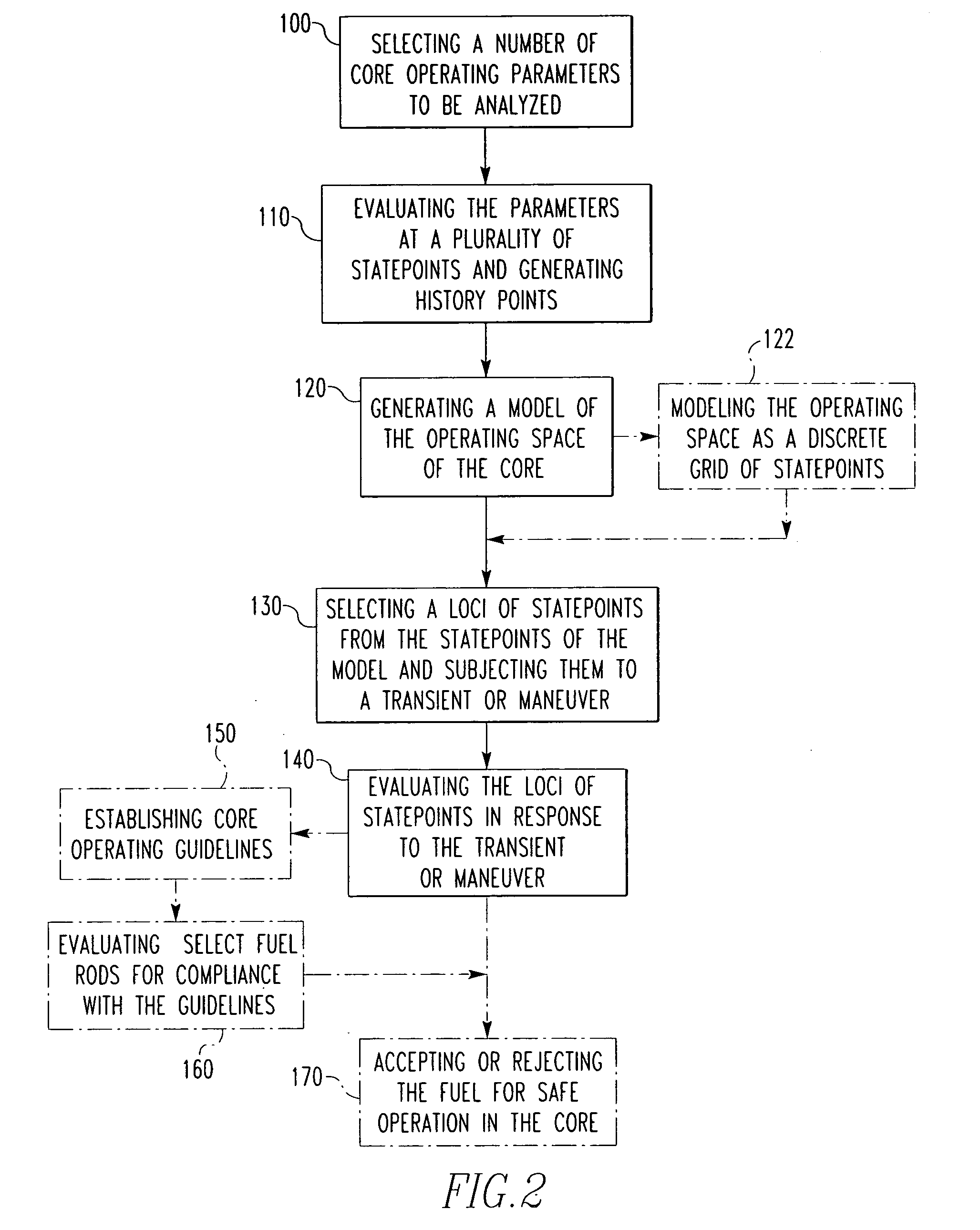Method for analysis of pellet-cladding interaction
a technology of interaction and pellets, applied in nuclear engineering problems, nuclear elements, greenhouse gas reduction, etc., can solve the problems of radioactive fission products exposed to reactor coolant, significant stress on the cladding, and radioactive fission products exposed to the coolant of fuel pellets b>4/b>, and the condition is, therefore, extremely undesirabl
- Summary
- Abstract
- Description
- Claims
- Application Information
AI Technical Summary
Benefits of technology
Problems solved by technology
Method used
Image
Examples
example
[0052]For the comparison, the same plant operating period (e.g., cycle), the same number of operational histories, and the same number of times within the operating period, are analyzed under both methods. Specifically, in both methods, about 2-3 operational histories were each analyzed at about 3-4 different times within the period. The two methods of analysis then diverge significantly, as will now be discussed.
[0053]For the traditional approach, in addition to the foregoing steps, each of the 3-6 operational histories was then analyzed for between about 12-32 different normal operating maneuvers, and each maneuver was analyzed for about 30-60 time steps. This was followed by the application and analysis of about 4-8 Condition II transients starting at each normal operation statepoint. Each Condition II transient starting at a normal operation statepoint had to also be analyzed for about 10-150 time steps. The power history versus time for each of the foregoing steps was applied f...
PUM
 Login to View More
Login to View More Abstract
Description
Claims
Application Information
 Login to View More
Login to View More - R&D
- Intellectual Property
- Life Sciences
- Materials
- Tech Scout
- Unparalleled Data Quality
- Higher Quality Content
- 60% Fewer Hallucinations
Browse by: Latest US Patents, China's latest patents, Technical Efficacy Thesaurus, Application Domain, Technology Topic, Popular Technical Reports.
© 2025 PatSnap. All rights reserved.Legal|Privacy policy|Modern Slavery Act Transparency Statement|Sitemap|About US| Contact US: help@patsnap.com



